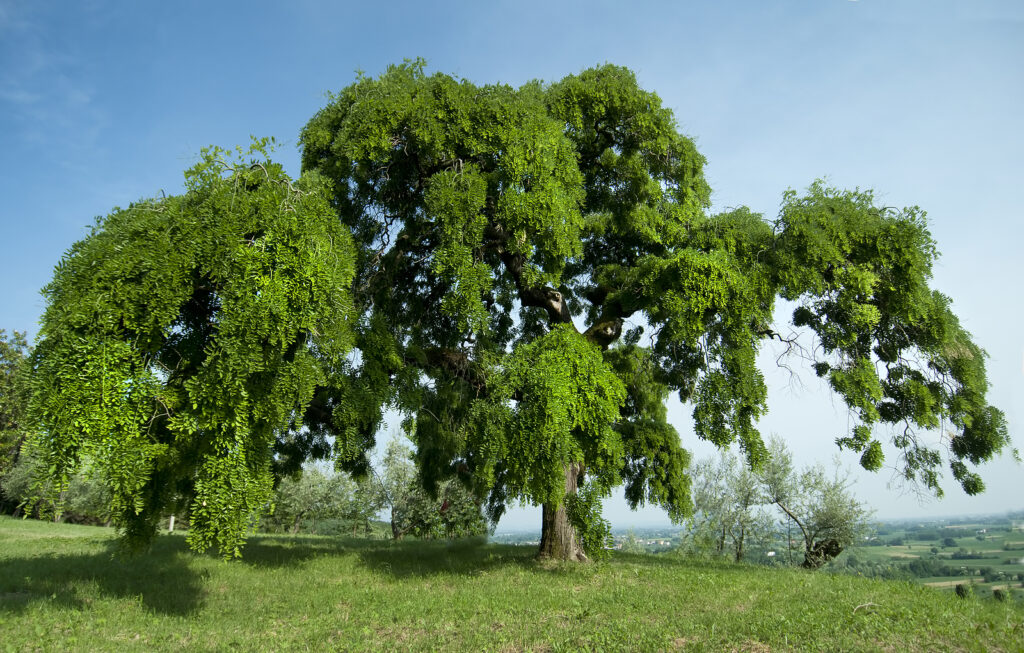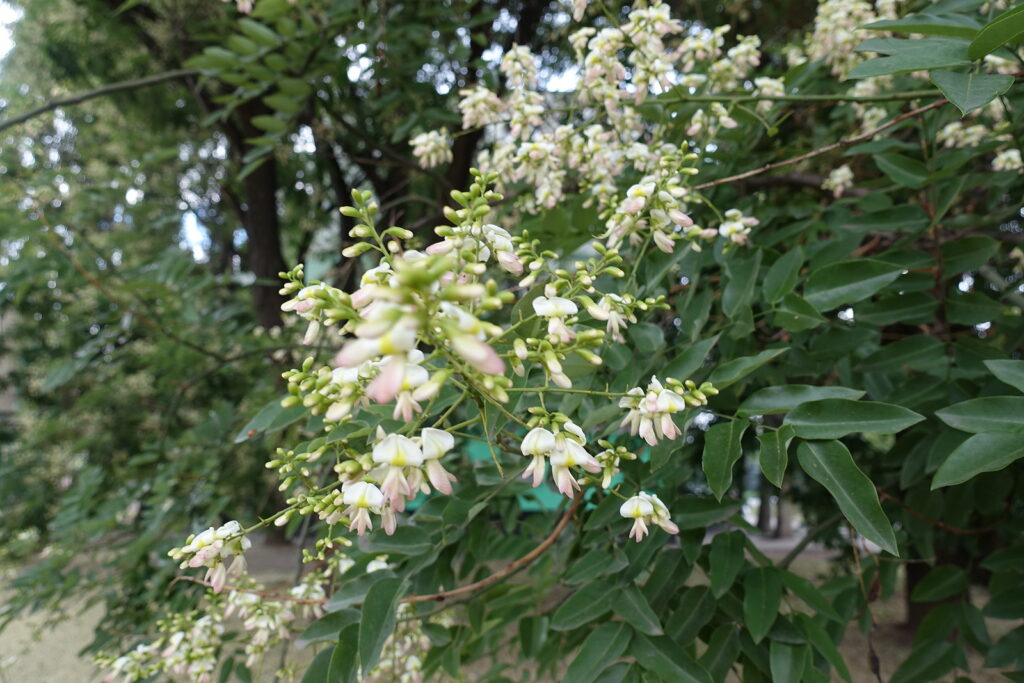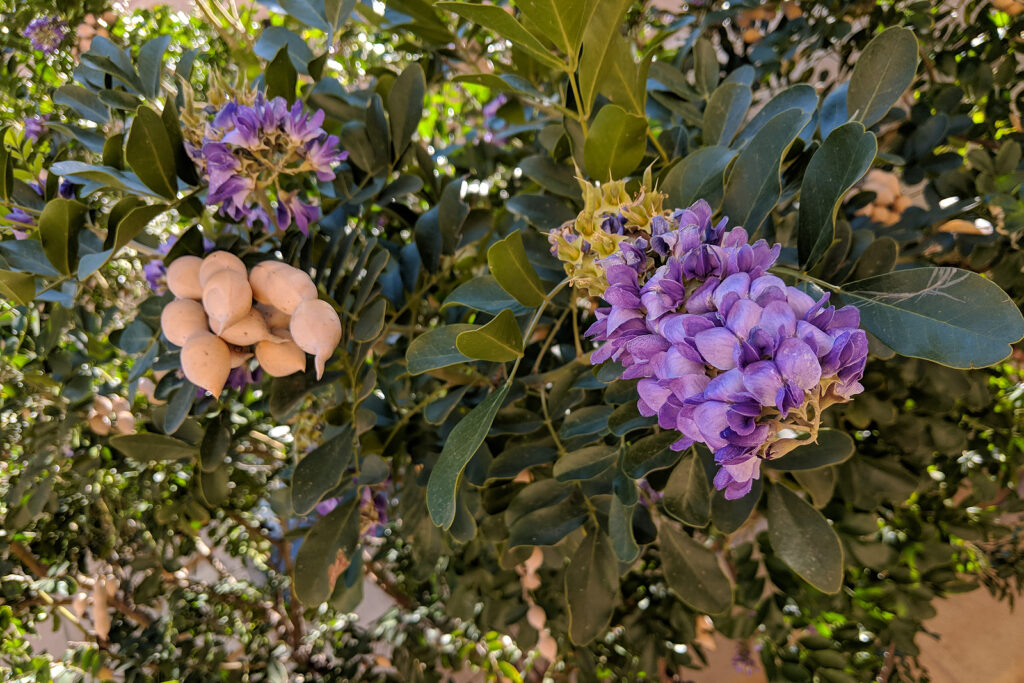Sophora is a genus of hardy evergreen and deciduous trees and shrubs. One species, the Pagoda tree, is a popular landscape tree with rich green leaves, a rounded head, and creamy white flowers in late summer and autumn.
Flowers on the Pagoda tree and other members of the Sophora genus appear in drooping clusters. Flowers are followed by winged seedpods. The Pagoda tree has in finely-textured appearance; the bright green leaves reach 9 inches (22cm) in length and are divided into a dozen or more 1-inch-long leaflets. The tree—which can grow from 50 to 75 feet tall and wide—appears lacy and airy.
The Pagoda tree is good choice to cast light shade on a house, patio, or lawn.
Shrub members of the Sophora genus can be grown as large shrubs or small trees. Most grow to about 10 feet (3m) tall and wide; they also bear showy sweet pea-like flowers.

Get to know Sophora
- Plant type: Deciduous or evergreen trees or shrubs
- Growing zones and range: Zones 5 to 8
- Hardiness: Can withstand freezes
- Height and width: Pagoda tree grow 13 feet tall and 10 feet wide (4x3m) in 20 years; it can grow to 50 feet (15m) after 40 years
- Foliage: Leaves are composed of pairs of oval leaflets; leaves are small and autumn cleanup is minimal.
- Flowers: Drooping clusters of sweet pea-shaped white or yellow flowers followed by seedpods; seedpods resemble a string of beads.
- Bloom time: Summer bloom followed by seed pods in autumn.
- Uses: Deciduous shade tree
- Common name: Sophora, Pagoda tree
- Botanical name: Sophora
- Family name: Fabaceae
Where to plant Sophora
- Plant Sophora in full sun.
- Grow Sophora in humus-rich, well-drained soil.
- Sophora can tolerate drought, heat, and air pollution. It is a good choice for urban areas.

When to plant Sophora
- Set container-grown plants in the garden in early or mid-spring.
Planting and spacing Sophora
- Space Sophora 10 to 50 feet apart depending on the variety.
- Pagoda tree can grow to 50 feet (15m) wide in 20 years.
How to water and feed Sophora
- Slow, deep water Sophora to encourage deep root growth.
- Fertilize Sophora with an all-purpose fertilizer when spring growth begins.

Sophora care
- Train young trees to a single trunk with well-spaced branches.
- Prune back side branches in late summer to reduce weight; heavy branches can break in winter storms.
- Seedpods that fall in autumn can be slippery when wet.
Sophora pests and diseases
- Leafhoppers, mildew, and twig blight can sometimes attack Sophora trees and shrubs.
Sophora propagation
- Sow seed in a greenhouse or cold frame in spring.
- Root semi-ripe cuttings in early autumn.

Sophora varieties to grow
- Sophora japonica, Japanese Pagoda tree: Deciduous tree grows 50 to 75 feet (15-21m) tall and wide; small yellowish-white flowers carried on branched 12-inch (30cm) spray followed by 3-inch pods; cultivars include ‘Regent’, ‘Pendula’, ‘Princeton Upright’, and ‘Regent’.
- S. microphylla: Evergreen shrub or small tree with striking yellow flowers grows to 8 by 8 feet (2.4×2.4m).
- S. secundiflora, (syn. Calia secundiflora) Texas mountain laurel: Evergreen shrub can be trained into 25-foot (7.5m) tree which short trunk of multiple trunks; slow growing; sweet-scented violet-blue flowering in 4-to-8-inch (10-20cm) drooping clusters; midwinter to early spring bloom.
- S. terraptera: Deciduous shrub or small tree bears bright yellow flowers in spring; grows to 10 x 10 feet (3x3m).



